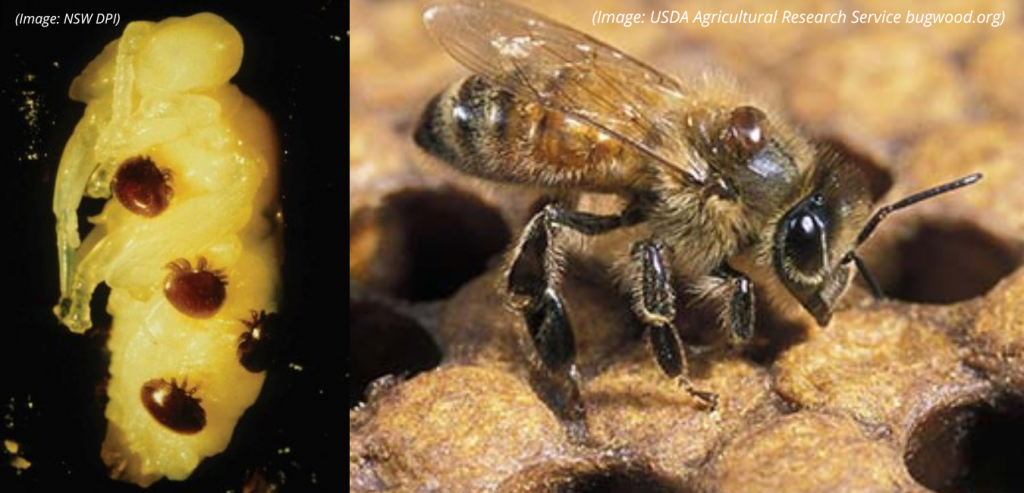
Strong support for Dr Graham Stirling’s nematode masterclass, VIC
27 June 2022
Vegetable price pinch and production pressures
29 June 2022Current situation: 27 June 2022
Varroa mite (Varroa destructor) was detected in two of six sentinel hives at the Port of Newcastle on Wednesday 22 June 2022. The detection was the result of routine surveillance on sentinel hives by New South Wales Bee Biosecurity Officers.
All six-sentinel hives have had bees euthanised and the hives are being inspected for mites. Three private hives that were in the vicinity of the sentinel hives have also been euthanised.
Under the current agreed strategy, eradication plans include treatment of beehives within a 10km emergency zone around the detection.
The NSW Department of Primary Industries (NSW DPI), with assistance from the Australian Government, is undertaking surveillance and inspection of managed and feral honeybee hives and nests within a 25km surveillance zone to limit the extent of the incursion.
Beekeepers are not to move hives in the Newcastle area until further notice. An emergency order is in place to stop hive movements within the 50km biosecurity zone and compliance with the order is being enforced by NSW Police.
Background:
Varroa destructor is a serious parasite of adult European honey bees, (Apis mellifera) (EHB) and is considered the greatest threat to Australia’s honey and honey bee pollination plant industries.
Varroa destructor is not established in Australia. Australia is one of the few counties in the world to remain free of varroa mite.
Today, the Varroa destructor mite is responsible for the collapse and death of European honey bee colonies wherever it is present (if untreated) around the world.
If native bee populations are wiped out due to varroa mite, it will affect pollination of Australia’s horticultural crops. All beekeepers in Australia should inspect their hives regularly for signs of varroa mite and other exotic pests
Biosecurity reporting:
Movement restrictions for EHB are in place for a 50km zone around Port of Newcastle.
NSW beekeepers must notify NSW DPI of the location of all hives within the 50km biosecurity zone.
If you suspect your bees may have been affected, phone the Exotic Plant Pest Hotline on 1800 084 881. This will put you in touch with your state or territory’s biosecurity agency.
Information about bee biosecurity, hive care, and photos that will help you identify varroa mite, are available on the Bee Aware website.

Varroa destructor mite feeding on honey bee larvae.
About Varroa destructor:
- Varroa destructor, is a distinctive-looking small mite, around 1mm in diameter and is a parasite of the EHB and the Asian honey bee.
- Mites are easily identifiable to the naked eye and are a reddish-brown colour.
- Untreated hives of European honey bees infested with varroa are likely to die within 3 to 4 years.
- It is the most serious global pest of honey bees.
- Drone bees can move varroa mites from hive to hive and even between apiaries. Mites are agile, move into hives quickly and transfer through contact between bees. There are strict quarantine requirements in place to protect the Australian honey bee industry.
- It is estimated that establishment of varroa mite in Australia could result in losses of $70 million a year.


